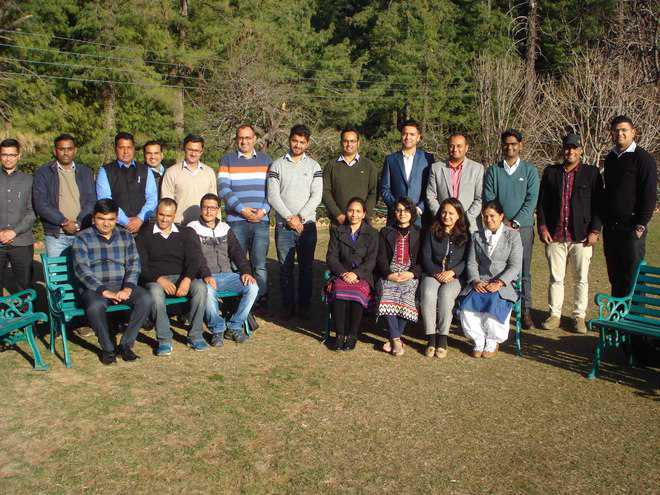
Shriniwas Joshi
Successfully going through the rigours of the State Public Service Commission, 22 officers, selected for the state administrative, police, development, revenue and treasury services, joined the Himachal Institute of Public Administration at Fairlawns, Shimla, for undergoing training in the Foundational Course (See photo). I was invited to introduce them to Himachal Pradesh, its achievements and problems.
When I told them that Himachal was the most rural state in India with 89.96 per cent population living in rural areas, a question was raised whether it was good to be a rural state or not.
They quoted Mahatma Gandhi, “My India lives in villages” and then asked, “Why can’t we experiment seriously with PURA-providing urban facilities in rural areas so that the state enjoys its rural face with development?” I told them that it was tried in Himachal Pradesh when President APJ Abdul Kalam had introduced the concept but it did not materialise and ultimately the former Rural Development Minister Jairam Ramesh said PURA had failed. That government was voted out.
The present government announced three urban development issues - Smart Cities, Housing for all and AMRUT. AMRUT is the Atal Mission for Rejuvenation and Urban Transformation being executed in Shimla. Earlier, even the UPA government had introduced JNNURM – Jawaharlal Nehru National Urban Renewal Mission. Nandan Nilekani writes in his book “Imagining India”: “India of our imagination has for long been a country that ‘lives in villages’. Our early governments went so far as to assert that rural-urban migration was an evil trend that had to be controlled and even reversed. Now, after decades of hostility towards urbanisation, we are coming to terms with the fact that cities are inevitable and necessary for our economic health.”
China has beaten us in the race for urbanisation. It started with 12 per cent urbanisation in 1952 when we were 18 per cent. It touched 50 per cent in 2011 when we could touch only 30 per cent. That is one of the reasons that China has a faster pace of economy that of ours.
The exchange of ideas on apple production was also interesting. I told them that though Himachal Pradesh is ‘fruit bowl of India’, it is apple which constitutes 85 per cent of the total fruit production. Our annual apple economy is about Rs 3,500 crore and we produce, on an average, 5 lakh tonnes of yearly apples, making it to 2.5 crores of boxes. The production of apples in our state is, however, confined to 8 to 10 tonnes of apples per hectare whereas in China or the USA, it touches 35 to 40 tonnes. Why so? Many ideas floated, including not adopting modern techniques, poor plant pathology, the barriers checking the flow of information from the laboratory to land and improper use of pollinators. The participants, however, mentioned the names of a few individuals who were achieving excellent results in apple-production but these were isolated efforts. One of the participants, I believe, touched the crux of the problem when he said the horticulture was at the mercy of Nepalese labourers who get a cut on the selling rate of apples for working in the fields.
They do not own land and so have no interest in improving the lot of the plants and those who own the land are physically unfit to work in the fields whereas their young ones are working in Singapore or Dubai or metropolis of India. These old and tired people live in palatial buildings that their offspring have made and the orchards that they had raised, when they were young, provided them a regular income. They have little interest in developing their orchards. Could be this one of the reasons of practically no buoyancy in apple production?
The reasons of high percentage of school students were also discussed when I told them that this was one of the sectors where Himachal with 0.54 per cent of children out of schools in primary education beat Kerala where this percentage is 0.55. I told them that it was possible due to the attitude of the parents, come what may, to send their wards to schools.
— The writer is a retired bureaucrat



























